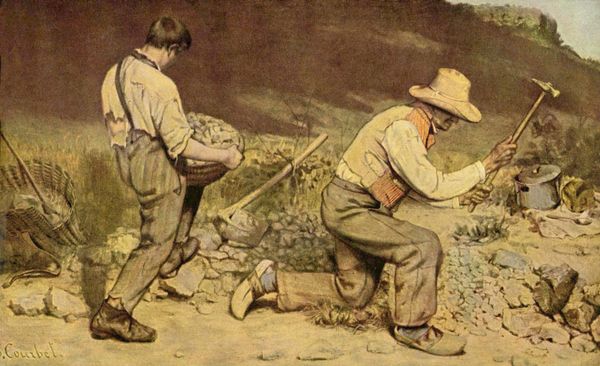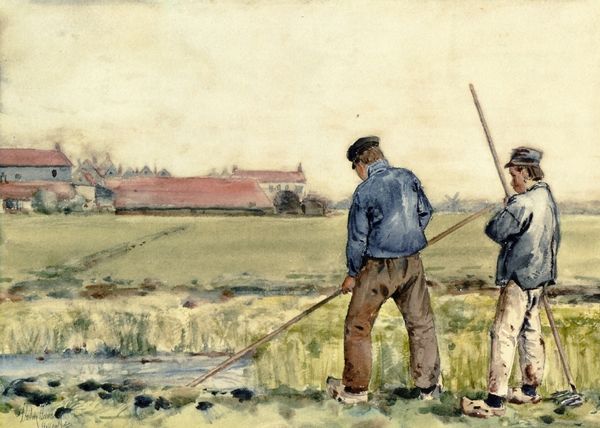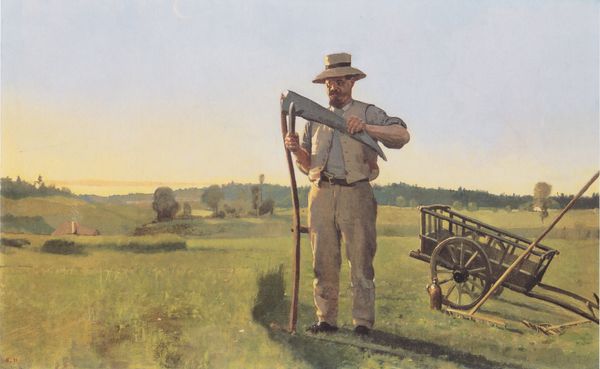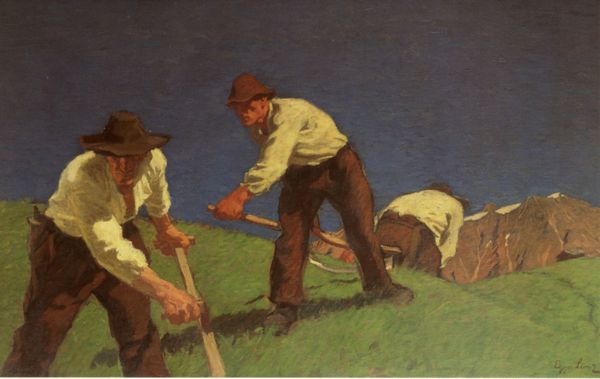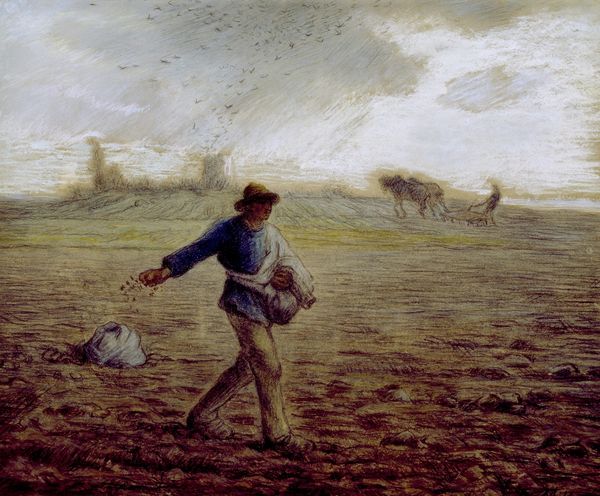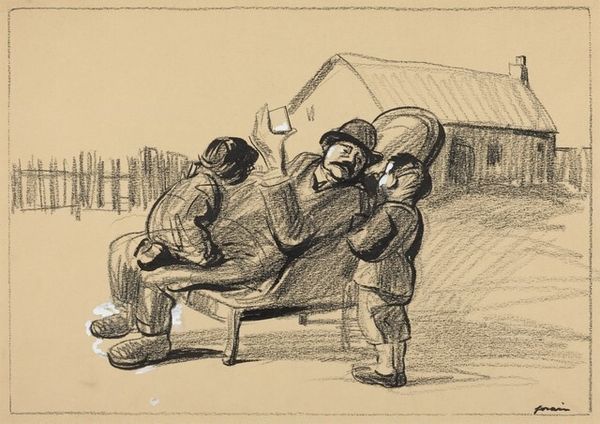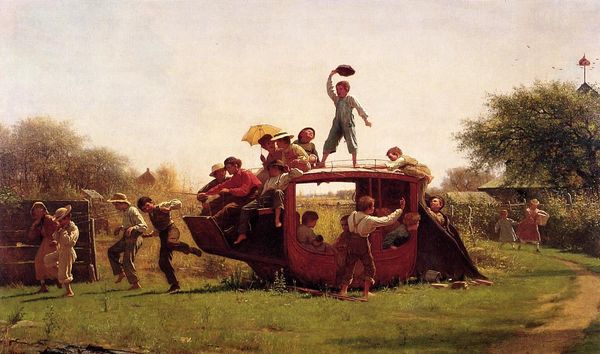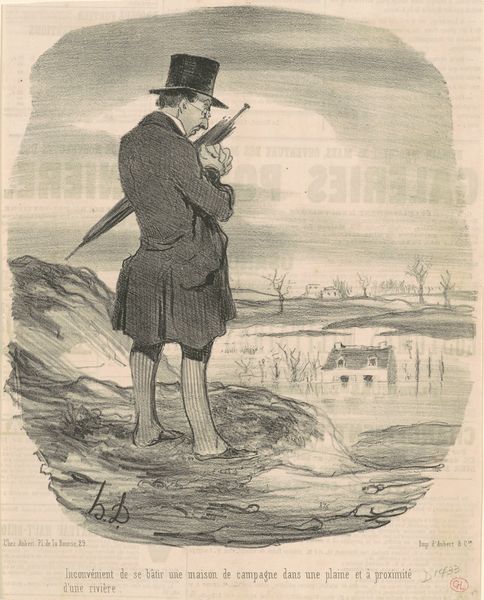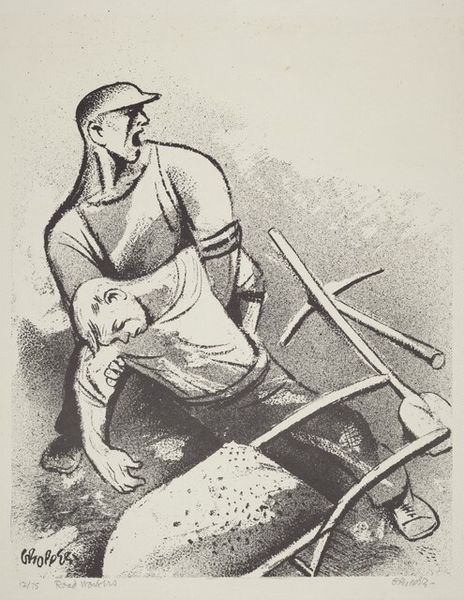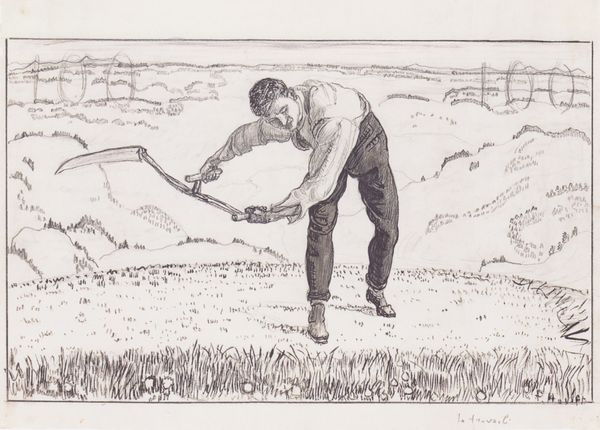
painting, plein-air, watercolor
#
narrative-art
#
painting
#
plein-air
#
landscape
#
figuration
#
oil painting
#
watercolor
#
watercolour illustration
#
genre-painting
#
watercolor
Copyright: Public domain
Editor: This is "11. Building the Log Cabin," painted in 1909 by Francis Davis Millet. It's rendered in a watercolour style, and the scene feels very deliberately staged. It feels like there’s an ideal of rustic Americana that Millet is putting forward. How do you interpret this work within the broader historical context? Curator: The choice of representing labor like this—especially construction of a home—reflects early 20th century anxieties. Think about it: rapid industrialization, urbanization, and immigration were drastically changing the American landscape. This scene then becomes an intentional visual counterpoint, almost a staged "return" to a perceived simpler, more authentic past. Notice how Millet presents these figures not as struggling, but as purposefully engaged. What effect do you think this has on the viewer? Editor: It does create a sense of romanticism, almost like a tableau vivant of hard work, making it appealing and digestible for a middle-class audience who probably wouldn't engage in this type of labor themselves. Curator: Exactly. It's also important to consider Millet's background and intended audience. His works, often genre paintings and murals, circulated amongst a specific social class, frequently reinforcing certain cultural values. What impact do you believe these kinds of idyllic images had on shaping national identity? Editor: I imagine that showing labor as something to be admired and that hearkens back to simpler times could encourage nostalgia for earlier American times, despite the real hardships those times also entailed. I'm going to start paying more attention to genre paintings now and see what kind of social statements they're making. Thanks for the new lens! Curator: A pleasure! Remembering that art doesn't exist in a vacuum is the key takeaway. Considering the socio-political climate is crucial for a deeper understanding of any artwork's intent and impact.
Comments
No comments
Be the first to comment and join the conversation on the ultimate creative platform.


